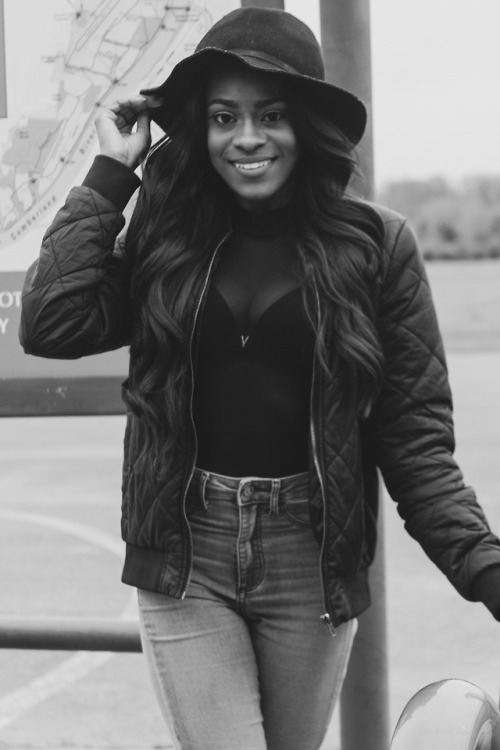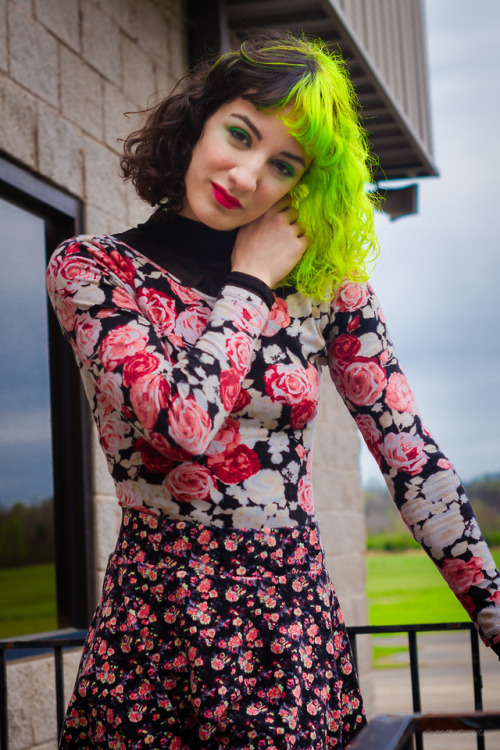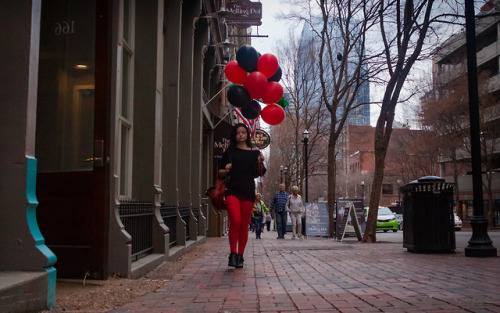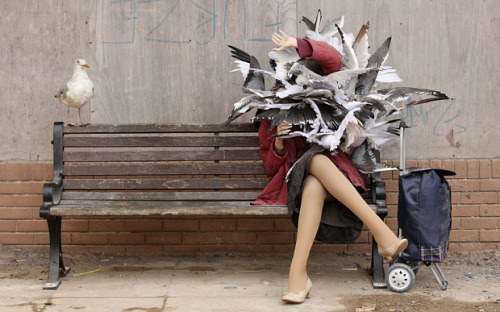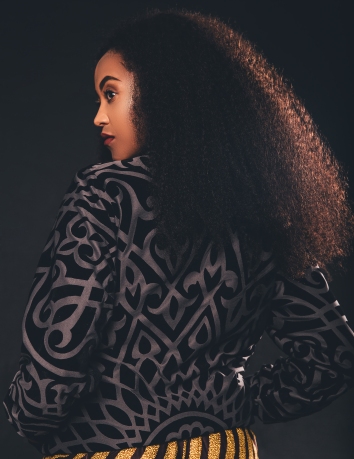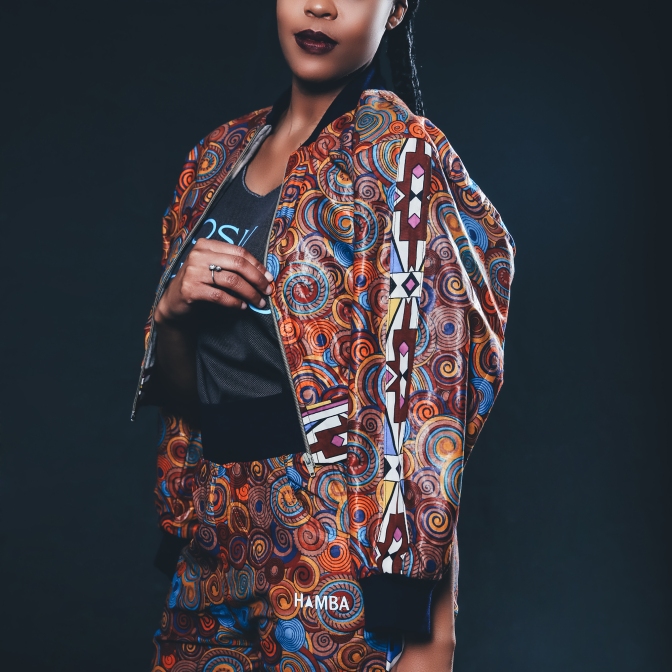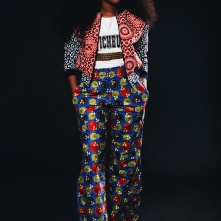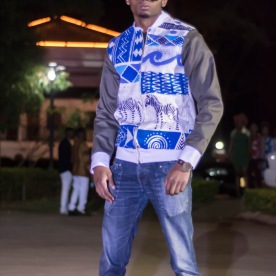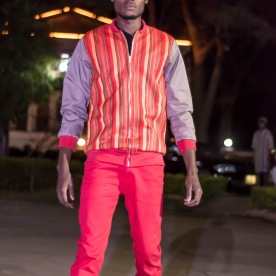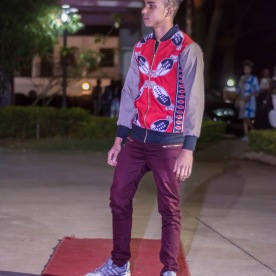#featured
There was a scene out behind the movie house
There was a scene out behind was originally published on The Gallery
Post link
An exciting new opportunity stood before me
model: Brochelle Davis
For a moment was originally published on The Gallery
Post link
I believe the substance of my life is a good thing
featuring Ash Mooney-Soto
Understanding this was originally published on The Gallery
Post link
L’amour s’élève au-dessus parce que l’amour est la colombe
AMOUR ~ haine was originally published on The Gallery
Post link
This was one of the first posts I saw of @kitfets wonderful feet! And I saw how LONG those soles were! I was amazed! Such lickable soles and that super long second toe! Oh so lovely! Be sure to follow her IG @kitfets ! As well as her fanpage @kitfets_fan_page
Post link
Inside Banksy’s Alternative and Grim Version of Disneyland
Welcome to
Inside the 2.5 acre site, you will find a grim fairytale castle, a boat pond full of asylum seekers, and other satirical oddities, such as an anarchist training boot camp.
Among its 18 attractions
The exhibition includes pieces from over 50 artists from 17 different countries, which include artists such Damien Hirst, Jenny Holzer and Jimmy Cauty.
You can see
Post link
This blog is my personal memorial to a lost time in New York City. With each long-form post, I’m trying to recreate a scene or experience which is gone forever. This semester I’m taking an amazing class called “New Perspectives on American Art for the 21st Century”, taught by Dr. Joyce Polistena at Pratt. Over the course of the semester, she has mentioned that many of the painters we’re learning about lived on 10th Street. This post will serve as an attempt to resurrect the Tenth Street Artist Studios, the first artist lofts.

(Berenice Abbott, Tenth Street Artist Studios, 1938, From the Collection of the Museum of the City of New York.)
The Tenth Street Studio Building was erected in 1857. It was funded by a businessman named James Boorman Johnston. Johnston hired architect Richard Morris Hunt to design the first building purpose-made for artists. The units were attainable only to established artists due to the fact that studios, some with attached bedrooms, rented for between $200 and $400 dollars per year. The photo below is of Richard Morris Hunt’s space in The Tenth Street Studio building. Pictured are the desks of some of his students in the architecture school he eventually opened in the building. (Source)

The building was designed around its central communal gallery, illuminated with ambient light from the glass skylight ceiling. Sprawling outward from the center were the private studios of some of the greatest American artists of all time. In this digitized directory from 1876, we can recognize plenty of the residents.

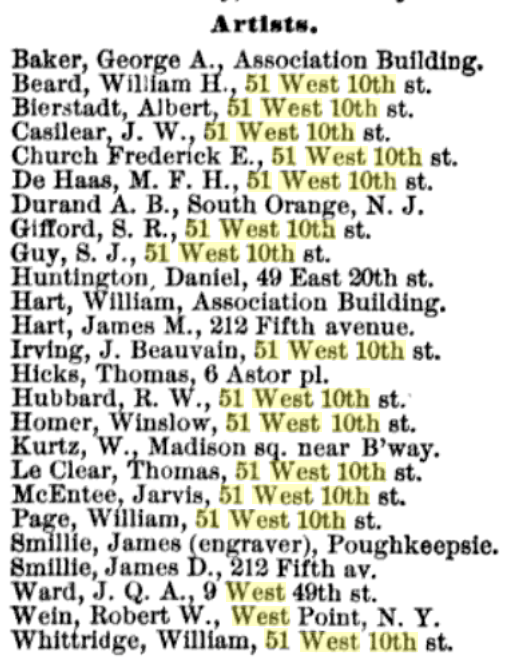
(Source:NYPL/Google)
This photo taken in 1866 by S. Beer shows Worthington Whittredges’ studio with many other artists inside! Shown are William H. Beard, John George Brown, John W. Casilear, Sanford Robinson Gifford, Regis F. Gignoux, Seymour J. Guy, William M. Hart, Edward L. Henry, Richard W. Hubbard, Thomas Le Clear, Jervis McEntee, John F. Weir and Whittredge. (Source)

The building was not only a conveniently designed space to paint but the communal gallery quickly became the epicenter of exhibitions in New York City. In 1859, Frederic Edwin Church exhibited his 10-foot panoramic painting, The Heart of The Andes in Tenth Street’s central space. (Wikimedia Commons)

“The installation of the work was as unique as its dimension and detail. There is no record of the appearance or arrangement of the Studio Building exhibit. It has been widely claimed, although probably falsely, that the room was decorated with palm fronds and that gaslights with silver reflectors were used to illuminate the painting. More certain is that the painting’s casement-window–like “frame” had a breadth of fourteen feet and a height of almost thirteen, which further imposed the painting upon the viewer. It was likely made of brown chestnut, a departure from the prevailing gilt frame. The base of the edifice stood on the ground, ensuring that the landscape’s horizon would be displayed at the viewer’s eye level. Drawn curtains were fitted, creating the sense of a view out a window. A skylight directed at the canvas heightened the perception that the painting was illuminated from within, as did the dark fabrics draped on the studio walls to absorb light. Opera glasses were provided to patrons to allow examination of the landscape’s details, and may have been necessary to satisfactorily view the painting at all, given the crowding in the exhibition room” - Avery, 1986.
This “grand opening” of the building predicted a decade of prosperity for the studios. The Tenth Street Studios transformed mere painters into true artist-entrepreneurs. After Church’s exhibition was over, he sold the painting to a private buyer but reserved exhibition rights. (Heart of the Andes is now part of the permanent collection of The Met) Frederic Edwin Church transcended his role as ‘mere painter’ into ‘savvy businessman’. The Studios brought the artists into direct contact with their customers and potential-patrons.

The image above is an illustration of a reception at Tenth Street in 1869. (Source)
Visiting The Tenth Street Studios was as much an artistic affair as it was a social event. There are numerous newspaper articles from the time period, pouring over the elaborate and vast details of the space. On January 19th, 1859, this article was published in The New York Times:
“Artists’ Reception in the Tenth-Street Studio. - Brilliant Assemblage.
There are few things more delightful, as Mr. Micawber says of a deviled turkey’s leg, than an artist’s reception. It is one of the institutions that have naturally sprung up quite promiscuously and naturally within the past three of four years, and they have been productive of a vast deal of benent both to Society and Art. There are two of these institutions. One is composed of an Association of Fifty Artists who give their reception and exhibit their “works” at the same time in the large room of Dodworth’s Dancing Academy ; the other is more exclusive, and is composed solely of the artists who inhabit the cloisters of the studio in Tenth-Street. The Dodworthians held their first reception for the season a few weeks since and the artists of The Studio held theirs last evening, in the large exhibition-room of the Eccaleobion of the Fine Arts. No pictures or works of art of an kind were admitted, except the productions of the artists of the Studio, and a most brilliant and attractive display they made. The only drawback to the pleasure of the exhibition was the trifling one of not being able to see any of the works exhibited. The great charm, however, of these receptions is not the pictures, nor the sculpture, nor the drawings, but the company. You find yourself, on entering the rooms, if you succeed in entering them, in the midst of a brilliant assemblage of youth, beauty, and fashion; of men worth knowing and women worth seeing ; and being hemmed in on all sides by orbicular spreads of brocade and velvet, you stand still, with your hat above your head, or suffer yourself to be swayed hither and thither by the pressure of the crowd. You catch glimpses of gilt frames in the distance, and now and then you find yourself thrust against a white but unresisting object, which you discover, on turning your head, to be a hideous group of Italian peasants in marble. You know there are charming pictures on the walls, lovely landscapes by Hubbard and Gifford and Quicy Thorndyke and Regis Gignoux, and Suydam and others ; you know there are groups of game by Hays and portraits by Osgood. But what’s the use? You cannot see them. Nobody sees them. But everybody sees everybody and there’s the delight of it. The ladies exhibit their their marvels of milinery, for New York ladies never miss an opportunity of exhibiting their dresses, as they out not to do, and the gentlemen exhibit their gallantry and gloves, and so the Receptions come to an end. And very delightful they are, as we said in the beginning. Some of the artists’s rooms last evening were lighted up and formed the most agreeable lounging places. There in Suydam’s room, for example, besides his own pretty coast scenes, might be seen one of the finest cabinet paintings of the modern French School, a charming little picture by Edouard Frere n, in Gignoux large room might be seen a superb picture of “Niagara Falls by Moonlight” which that accomplished artist has just finished for Mr. Belmont. Niagara has lately been done, artistically speaking, almost to death ; but this grand picture of Gignoux’s throws a new interest over the scene. The artist has invested in the subject, grand as it is, with a new grandeur by his treatment of it. Those who have not seen the great cataract b moonlight, have yet to see it under the most favorable aspects. Mr. Gignoux has most happily chosen, not only the best points of view, but the best time for his purpose. The spot selected, Goat Island, looking over the Horse-shoe, affords the best single e view of the Falls that can be obtained, as the full-orbed moon is sinking over the distant forests on the Canada shore, throwing a flood of silver light over the rushing waters. The scene is full of a solemn grandeur, which the artist has most happily preserved. The Reception was as pleasant an occasion as could be conceived of, but those who wish to see the pictures and sculptures of the Studio artists will go quietly by daylight. “
1864 brought John Ferguson Weir. It was at The Tenth Street Studio Building that he painted his first major work, An Artist’s Studio. (WikimediaCommons)

In 1872, Winslow Homer painted Snap The Whip, and the picture was exhibited in his residence at the Tenth Street Studio Building in 1873. (MetMuseum)

Landscapes eventually fell out of fashion but in 1878, William Merrit Chase took over the central gallery and he brought with him not only a museum’s-worth of exotic wares, but a reviving breath into the lungs of The Studio. Historians often cite his passage from the studio as a signifier of it’s decline, but I have chosen to interpret the period right before as the Golden Age of Tenth Street. Pictured below is W.M. Chase himself in his studio. Notice the light from the glass ceiling bathing the space and his copy of the famous Frans Hals painting over his head. (Wikimedia Commons)

The following photographs of Chase’s studio both document the space he worked in and paint a non-human portrait of the artist himself. William Merritt Chase decorated his space to inspire him and for that reason, his studio in Tenth-Street became a work of art all on its own. It is important to remember that The Tenth Street Studios were not so because they were affordable, but rather they provided the perfect setting for already established, successful, painters, who could afford the relatively high rents. Chase took over the entire central gallery, leaving him plenty of room to display his souvenirs and oddities he collected from all over the world.
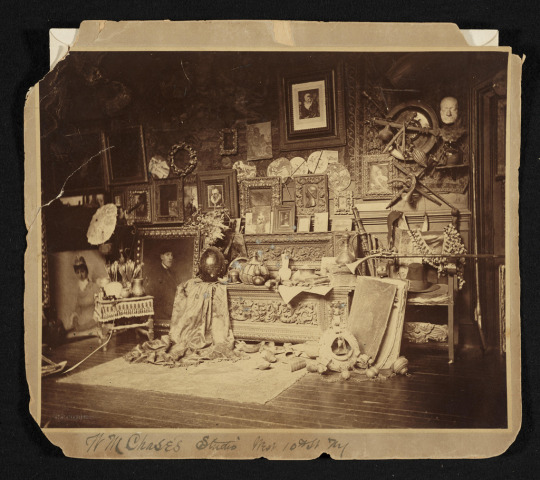


Based on the number of pictures Chase made of his studio, we can easily see how much he enjoyed this space.

(William Merritt Chase, Studio Interior, 1882. Source)
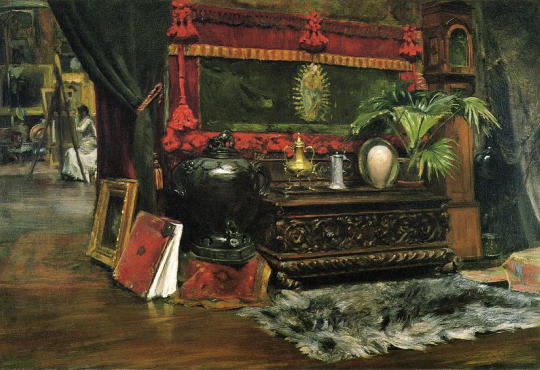
(William Merritt Chase, A Corner of My Studio, 1895. Source.)
10th Street Studio Building
51 West Tenth Street: The Incubator of American Art
Jacob Riis describes the dwellings of mid to late nineteenth century New York City as being “dirty, dank, windowless, hovels” in How The Other Half Lives: Studies Amongst the Tenements of New York. It was in these spare rooms, unused attic spaces, and extra commercial areas like basements, where artists rented spaces to work in. A savvy businessman named James Boorman Johnston identified a market deficit - adequate studio spaces In 1857, Johnston built The Tenth Street Studio Building. The 51 West Tenth Street was host to historic exhibitions like Frederich Edwin Church’s 1959 Heart of the Andes and society affairs in William Merritt Chase’s extravagantly- decorated studio. Using primary sources, this paper was first conceived in the form of a blog post ( http://newyorkcityvintage.com/post/140584473451/tenth-street-studio- building )for seamless presentation of text and images. The purpose of this research is to create a singular set of comprehensive metadata so that the story of The Tenth Street Studio Building is free and accessible to all people with an internet connection. Using sources from the public domain such as newspaper archives, letters, directories, and images from open-source collections of art and archival institutions, 51 West 10th Street : Incubator of American Art will attempt to revive the experience of one of the most important addresses in art of all time from its birth in 1857 to its death by destruction in 1955.
BIRTH OF THE BUILDING
In the nineteenth century, The United States was still a relatively infantile country and its art was considered accordingly unremarkable. Respectable collectors in America preferred European paintings. In fact, the first American would not be accepted into the
Paris Salon until 1878, a year that was widely considered “disappointing”. (1) Congruous with the despicable attitude that was generally held about American art, most people would have considered James Boorman Johnston’s 1857 investment rather risky or even “experimental” (2). Johnston hired Richard Morris Hunt to design the first-ever artist’s studio building. The Beaux-Arts graduate designed a the building around a European-style “courtyard” that took the form of a glass-ceilinged central communal gallery. Three surrounding floors housed twenty-three studios in varying sizes. Hunt used large windows to provide the sunlight New York artists desperately needed. The building’s facade was done totally in red brick. The walls, moldings, and other accoutrements were all done in the same material.
The first tenants moved in before construction was complete. Rents at 51 West 10th Street were relatively expensive. This was a smart decision on behalf pf Johnston as it attracted only the most successful working artists. By the time construction was complete, the building was filled with artists of all disciplines. Richard Morris Hunt opened his own architecture school and subsequently the first American school of architecture at the Tenth Street Studio building. He was surrounded by painters, sculptors, writers, and philosophers.
51 West 10 Street Earns a Reputation
The Tenth Street Studios were typically open during “acceptable hours” on weekends. In a sort of modified version of a penny museum, visitors would pay to experience art-attractions like seasonal exhibitions, immersive panoramic painting, and sometimes celebrity masterpieces. In 1859 When Frederick Edwin Church exhibited Heart of the Andes for the first time, the Tenth Street Studio building was happily
overwhelmed with visitors. Lines to see the painting reportedly curled around block after block every day it was exhibited. Heart of the Andes generated over $140 each day,
profiting $3000(1-AVERY) by the end of the three-week exhibition at 51 West 10th Street.
However, the success of this exhibition relied on more than just good painting. Even though there are no photographs or drawings depicting this specific exhibition, much was written about it in culture and society columns. According to one writer, the painting sat in a fourteen-foot frame which stood upon the ground to immerse the viewer in the experience and also to keep a constant proper eye-level with the crowd. The walls of the communal gallery were draped in dark fabric to absorb extraneous light from the skylight which was pouring a beam directly onto the painting, seemingly lighting it from within. The painting was covered with a dark velvet curtain that slowly danced open to reveal the glorious scenery. Upon reveal, some people felt overwhelmed by a sense of lightheadedness, vertigo, and overall immersion in the imagery. This was identified at the time as the realization of the sublime. Of course, all this could only be experienced if one was lucky enough to actually see the painting. Even though opera glasses were passed around so viewers could examine every rock, leaf, blossom, and minute scientific detail of the piece, the gallery was described as being so crowded that visitors may need the opera glasses just to see the painting at all. All of this commotion put Church in direct contact with his audience. The communal gallery at the studio temporarily made the traditional gallery/art dealer system obsolete and gave greater business-power to the artists who showed there.
The Tenth Street Studio’s inaugural show was simply the first in a tradition of raucous exhibitions and open studios in the building. Visiting The Tenth Street Studios
was as much an artistic affair as it was a social soectacle. There are numerous newspaper articles from the time period, pouring over the elaborate and vast details of the space. One New York Times article from January 18, 1859 details the experience of one of these affairs. The following text was transcribed from a scan of the article to Rich Text Format and then catalogued to be searchable and accessible by the author of this paper:
“There are few things more delightful, as Mr. Micawber says of a deviled turkey’s leg, than an artist’s reception. It is one of the institutions that have naturally sprung up quite promiscuously and naturally within the past three of four years, and they have been productive of a vast deal of benent both to Society and Art. There are two of these institutions. One is composed of an Association of Fifty Artists who give their reception and exhibit their “works” at the same time in the large room of Dodworth’s Dancing Academy ; the other is more exclusive, and is composed solely of the artists who inhabit the cloisters of the studio in Tenth-Street. The Dodworthians held their first reception for the season a few weeks since and the artists of The Studio held theirs last evening, in the large exhibition-room of the Eccaleobion of the Fine Arts. No pictures or works of art of an kind were admitted, except the productions of the artists of the Studio, and a most brilliant and attractive display they made. The only drawback to the pleasure of the exhibition was the trifling one of not being able to see any of the works exhibited. The great charm, however, of these receptions is not the pictures, nor the sculpture, nor the drawings, but the company. You find yourself, on entering the rooms, if you succeed in entering them, in the midst of a brilliant assemblage of youth, beauty, and fashion; of men worth knowing and women worth seeing ; and being hemmed in on all sides by orbicular spreads of brocade and velvet, you stand still, with your hat above your head, or suffer yourself to be swayed hither and thither by the pressure of the crowd. You catch glimpses of gilt frames in the distance, and now and then you find yourself thrust against a white but unresisting object, which you discover, on turning your head, to be a hideous group of Italian peasants in marble. You know there are charming pictures on the walls, lovely landscapes by Hubbard and Gifford and Quicy Thorndyke and Regis Gignoux, and Suydam and others ; you know there are groups of game by Hays and portraits by Osgood. But what’s the use? You cannot see them. Nobody sees them. But everybody sees everybody and there’s the delight of it. The ladies exhibit their their marvels of milinery, for New York ladies never miss an opportunity of exhibiting their dresses, as they out not to do, and the gentlemen exhibit their gallantry and gloves, and so the Receptions come to an end. And very delightful they are, as we said in the beginning. Some of the artists’s rooms last evening were lighted up and formed the most agreeable lounging places. There in Suydam’s room, for example, besides his own pretty coast scenes, might be seen one of the finest cabinet paintings of the modern French School, a charming little picture by Edouard Frere n, in Gignoux large room might be seen a superb picture of “Niagara Falls by Moonlight” which that accomplished artist has just finished for Mr. Belmont. Niagara has lately been done, artistically speaking, almost to death ; but this grand picture of Gignoux’s throws a new interest over the scene. The artist has invested in the subject, grand as it is, with a new grandeur by his treatment of it. Those who have not seen the great cataract b moonlight, have yet to see it under the most favorable aspects. Mr. Gignoux has most happily chosen, not only the best points of view, but the best time for his purpose. The spot selected, Goat Island, looking over the Horse-shoe, affords the best single e view of the Falls that can be obtained, as the full-orbed moon is sinking over the distant forests on the Canada shore, throwing a flood of silver light over the rushing waters. The
scene is full of a solemn grandeur, which the artist has most happily preserved. The Reception was as pleasant an occasion as could be conceived of, but those who wish to see the pictures and sculptures of the Studio artists will go quietly by daylight.”
It was under these exact exciting circumstances that Emanuel Leutze would have shown Westward The Course of the Empire Takes Its Way in 1860. Leutze’s piece was nearly twice as big as Heart of the Andes, adding competition and in-fighting to the list of benefits of working in The Studio Building.
In 1861, Leutze moved out of the Tenth Street Studio Building and was replaced with Albert Bierstadt. Representing the Hudson River School painters, Bierstadt completed some of his greatest worst at the Tenth Street Studio Building such as Echo Lake, Fraconia Mountains (1862) and The Rocky Mountains, Lander’s Peak (1862). The arrangement of the studio lent itself to the process of the Hudson River School artists. In the summer, they would travel to make studies for paintings, sometimes subletting their studio to other artists. In the Fall, they would return to the Tenth Street Studio Building to dedicate entire winters to articulate the power and divinity of nature. Landscape painting soon fell out of fashion. A change in tastes was marked by new residents of the building like genre painter, Winslow Homer. Homer did a ten year stint in the building, notable for his painting Snap The Whip (1872). The twice-yearly exhibitions would include American greats like William H. Beard and Worthington Whittredge.
Willliam Merrit Chase Returns to America
Over the next decade, the studio building would undergo a tremendous shift. In 1878, William Merrit Chase returned some studying amongst the impressionists in Europe. Chase’s reputation made him privy to the next open studio space and he moved in immediately upon return. Inspired by Europe, Chase envisioned magnificent,
large, paintings (however his painting style was too meticulous to ever complete a large painting). His average-sized studio space on the ground floor of 51 West Tenth Street would not do. The Studio building was experiencing a waning relevancy due to the decline of landscape painting. Seizing the opportunity, William Merritt Chase transformed the central communal gallery into his own personal studio. He buried the space in a “brilliant assemblage”, of exotic wares from his travels around the world. In 1859, James Boorman Johnston offered his brother, who coincidentally was also the Founding President of The Metropolitan Museum of Art, rights to the building. 51 West Tenth Street accepted John Taylor Johnston as its new landlord. William Merritt Chase’s time at The Studio marked a change the way it was run. The Tenth Street Studio building could no longer host public receptions as Chase occupied its gallery. The communal aspect of the building was essentially gone and although Chase’s residency marked a new chapter for 51 West Tenth Street, it also signaled the death of another. Newspapers lamented the loss of the private receptions. Special viewings at The Studio were the only way that friends and families of the artists could see the paintings before they were publicly exhibited.
Chase’s Tenth Street Studio
The Studio itself would become the subject and background of many of William Merritt Chase’s most notable interior scenes. A Corner of My Studio seems to be Chase’s ode to his space. The piece can be viewed as a non-human portrait. The Sun Times describes how Chase’s environment informed his reputation, “William M. Chase, N. A., is pretty widely known, not alone by his own works, which are many and interesting, nor by his pupils only, but as much by reason of his having had for years, in
the old Tenth street studio building, the one conspicuous show studio of the town.” William Merritt Chase is represented through the rich, Victorian decoration. Every inch of every wall and surface is host to a menagerie of foreign fineries. Brilliant light bathes furniture from the glass ceiling above. His style for decorating seemed to inspire the other tenants and by 1887, 51 West Tenth Street became was the most-written about studio in the world, setting a standard for style and eccentricity among the spaces of all subsequent artists. John Taylor Johnston died in 1893 and William Merritt Chase would move back to Europe to teach, leaving his studio and its legacy behind.
Demolition
Chase’s large space was quickly filled by sculptor Stirling Calder. Even though artists would occupy the building for fifty more years, the qualities that fueled the formative years of 51 West Tenth Street were gone. The twentieth century would bring the studio nominal success. It was still occupied by artists but without any special draw, 51 West 10th Street was lost among its backdrop of budding bohemian Greenwich Village. After nearly one hundred years of housing most of America’s greatest and most influential artists, a small notice was given in the New York Times announcing the sale of the property and its planned demolition. Being held together by only residual interest, The Tenth Street Studio Building was unceremoniously razed and replaced with apartments.
Blaugrund, Annette. “The Tenth Street Studio Building: A Roster, 1857-1895”. American Art Journal 14.2 (1982): 64–71. Web.
Disturnell, John. New York As It Was And Is. New York: D. Van Nostrand, 1876. Print.
Gray, Christopher. “Remembering An 1858 Greenwich Village Atelier”. New York Times 1997: n. pag. Print.
Hooper, Lucy H.. “The Paris Salon of 1878”. The Art Journal (1875-1887) 4 (1878): 254–255. Web.
Internet Archive". Archive.org. N.p., 2016. Web. 2 May 2016.
JSTOR Early Journal Content, “The Crayon,” Volume 5. , January 1898, Web. 2 May 2016. Web.
It’s been almost a year and a half in the making but quinnthefox.com is finally live. Designed and built completely from the ground up, Quinn finally has the home that he deserves.
Go check out the new website and make sure you check it out on desktop too – the experience is slightly different: www.quinnthefox.com
Hope you’re ALL EARS for this announcement! Here is the third (and probably final) guide in my “Remake You and Me” series: “How to Open Your Ears”. Head on over to instagram to check out all of the idioms hidden in this illustration:
https://www.instagram.com/p/B_QFQBxB6cV/?utm_source=ig_web_button_share_sheet
Post link
Winter is coming, at least it has hit some parts of South Africa already and we have you covered for the winter with our bomber jackets under HAMBA, which solve so many of fashions problems.
Problem 1: I want a jacket that is versatile throughout Winter and Summer and easy to layer
Solution: We have the classic bomber jacket that is available with a light fabric and light inner lining. Enjoy this jacket that is unisex and versatile as well, fabrics subject to availability.

The Classic Piece
Problem 2: I need to show off my figure and need a feminine jacket
Solution: Our crop versions have the beautiful length to show off the figure and a flattering cut to show off your feminine curves

Problem 3: I need a super bomber for winter to survive the windy days and extra cold weather
Solution: Our bated bombers give volume and warmth for the wearer and really useful for cold weather.

We got you covered you can find out the prices of these items with a $10 USD cash discount for cash payments. www.hambanow.bigcartel.com
Images and Creative Direction by SEIPONE MEDIA by Refenste Sebothoma
xoxo
Robin
Winter is coming! Bomber Jackets essentials by HAMBA Winter is coming, at least it has hit some parts of South Africa already and we have you covered for the winter with our bomber jackets under HAMBA, which solve so many of fashions problems.
Harare, Zimbabwe – I always wonder if people have a plan when they reach their goal weight. The journey to your weight loss or fat loss target is an exciting one, unfortunately the biggest problem is “Then what?”
From experience how you transform is very important in the maintenance of the body and what your next goal is.
My goal was to shred and get smaller…my next goal was to build muscle and…
HARARE, Zimbabwe – The year is starting and I cannot contain how excited I am to be alive first and foremost and able to make great clothes that people love as well.
Last year I lost a very important part of my soul, grandma Josephine who was in full support for HAMBA from the time in Lilongwe. Being able to share the beauty of life through my art. I am truly grateful!
I therefore love how the bomber jacket has been my favourite piece from the beginning.
To date there are four versions of the bomber.
Version 1: It was lined in pongee and mainly had khakhi sleeves as the signature look the contrast was everything.
Version 2: This bomber is lined with fleece for extra warmth and bigger pockets

Version 3: Crop Bomber adds a different proportion for women to show their waist and less bulky look.

Version 4: Zipper bomber for extra security has zippers for pockets

We keep getting better and we keep making the all weather bomber jacket for everyone!
Xoxo
Robin
Why I love the bomber jacket HARARE, Zimbabwe - The year is starting and I cannot contain how excited I am to be alive first and foremost and able to make great clothes that people love as well.About the HAMBA luxe clothing brand
HARARE, Zimbabwe – Starting the fashion label was bumpy and very taxing as I created a collection for Lilongwe in 2017.
In 2018 I saw myself creating brand new clothing from materials inspired by Africa and fitness.
We emerged with a fusion of athleisure and glam feminine looks to our classic Bomber jacket which has four versions to date.
The African Print Bomber original, Puffy Bomber, Cropped…
Harare, Zimbabwe – I recall starting this blog as a tumblr account on a dialup connection with ZOL as well as my moms HP computer which was for her company. If I had seen that in a few years I was going to have a collection in Malawi and clothes shot in Johannesburg I would have never believed.
I started very small but driven. I had a web camera for my content. Imagine a laptop on the ground as I…





